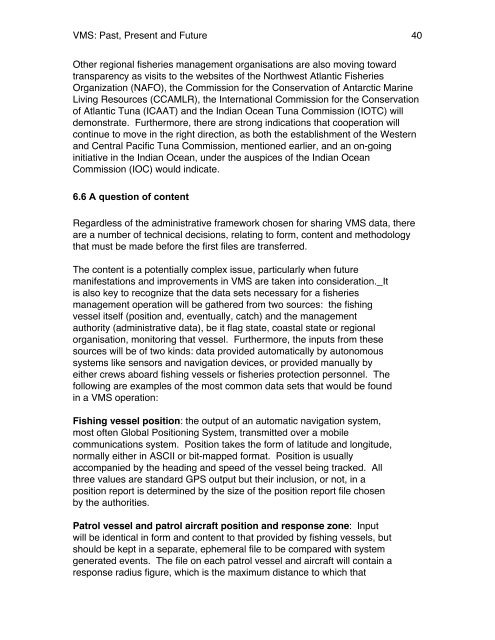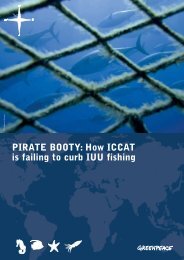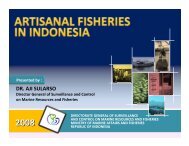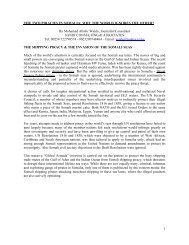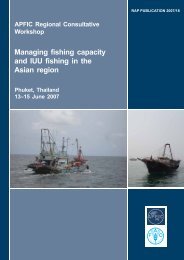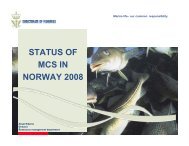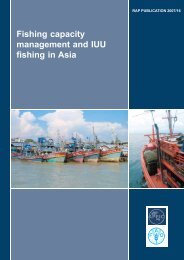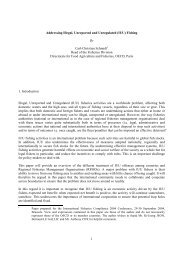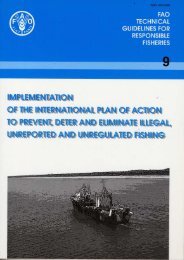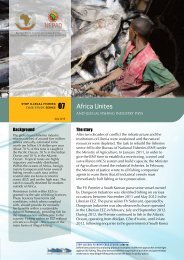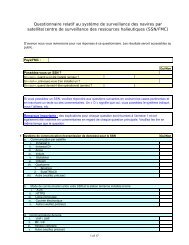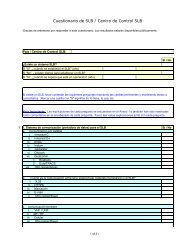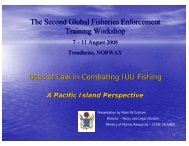Fishing Vessel Monitoring Systems: Past, Present and Future
Fishing Vessel Monitoring Systems: Past, Present and Future
Fishing Vessel Monitoring Systems: Past, Present and Future
Create successful ePaper yourself
Turn your PDF publications into a flip-book with our unique Google optimized e-Paper software.
VMS: <strong>Past</strong>, <strong>Present</strong> <strong>and</strong> <strong>Future</strong> 40<br />
Other regional fisheries management organisations are also moving toward<br />
transparency as visits to the websites of the Northwest Atlantic Fisheries<br />
Organization (NAFO), the Commission for the Conservation of Antarctic Marine<br />
Living Resources (CCAMLR), the International Commission for the Conservation<br />
of Atlantic Tuna (ICAAT) <strong>and</strong> the Indian Ocean Tuna Commission (IOTC) will<br />
demonstrate. Furthermore, there are strong indications that cooperation will<br />
continue to move in the right direction, as both the establishment of the Western<br />
<strong>and</strong> Central Pacific Tuna Commission, mentioned earlier, <strong>and</strong> an on-going<br />
initiative in the Indian Ocean, under the auspices of the Indian Ocean<br />
Commission (IOC) would indicate.<br />
6.6 A question of content<br />
Regardless of the administrative framework chosen for sharing VMS data, there<br />
are a number of technical decisions, relating to form, content <strong>and</strong> methodology<br />
that must be made before the first files are transferred.<br />
The content is a potentially complex issue, particularly when future<br />
manifestations <strong>and</strong> improvements in VMS are taken into consideration. It<br />
is also key to recognize that the data sets necessary for a fisheries<br />
management operation will be gathered from two sources: the fishing<br />
vessel itself (position <strong>and</strong>, eventually, catch) <strong>and</strong> the management<br />
authority (administrative data), be it flag state, coastal state or regional<br />
organisation, monitoring that vessel. Furthermore, the inputs from these<br />
sources will be of two kinds: data provided automatically by autonomous<br />
systems like sensors <strong>and</strong> navigation devices, or provided manually by<br />
either crews aboard fishing vessels or fisheries protection personnel. The<br />
following are examples of the most common data sets that would be found<br />
in a VMS operation:<br />
<strong>Fishing</strong> vessel position: the output of an automatic navigation system,<br />
most often Global Positioning System, transmitted over a mobile<br />
communications system. Position takes the form of latitude <strong>and</strong> longitude,<br />
normally either in ASCII or bit-mapped format. Position is usually<br />
accompanied by the heading <strong>and</strong> speed of the vessel being tracked. All<br />
three values are st<strong>and</strong>ard GPS output but their inclusion, or not, in a<br />
position report is determined by the size of the position report file chosen<br />
by the authorities.<br />
Patrol vessel <strong>and</strong> patrol aircraft position <strong>and</strong> response zone: Input<br />
will be identical in form <strong>and</strong> content to that provided by fishing vessels, but<br />
should be kept in a separate, ephemeral file to be compared with system<br />
generated events. The file on each patrol vessel <strong>and</strong> aircraft will contain a<br />
response radius figure, which is the maximum distance to which that


